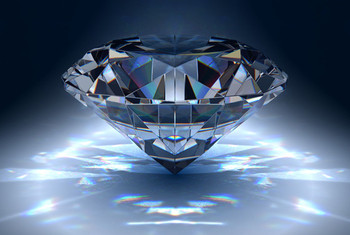
Whether it is your first pair of stunning earrings or that special engagement ring, you are likely to end up buying or owning diamond jewelry during your lifetime. Diamonds are major investments but many people are not sure about why they are usually so expensive.
The price of a diamond is based on quality evaluation or grading, which involves the process of an appraiser looking at what are commonly referred to as the 4Cs. These are the color, clarity, cut and carat weight. The 4C system was created to facilitate the evaluation process. Before you make the financial decision to invest in a stone, it is important to be aware of the basic aspects of diamond color grading.
Color Grading Overview
•Absence of color is the actual and good color rating when dealing with standard white diamonds. Diamonds that are more colorless are more transparent and more transparency will mean more sparkle or brilliance.
•Exceptions to the rules of the color rating system are what are known as the fancy colors, including canary yellow and pink. These types of colored stones can be more expensive in comparison to standard white diamonds.
•Diamonds naturally feature a white cloudy color that is the result of compression below the crust of the earth. The natural formation of diamonds can take billions of years and a number of subterranean shifts cause them to rise to the surface. The cutting process reveals the transparent brilliance of the diamond. Find the best color grade for diamonds here.
Lack of Color
•Evaluations of diamond color for most gem-quality stones are formed on the basis of lack of color. Structurally perfect and chemically pure diamond does not have any color or hue and can be compared to a pure drop of water, which is associated with a higher value.
•The color grading system for diamonds is based on measuring the degree or extent of colorlessness by comparing the stone to master stones of ascertained color value under specific viewing conditions and controlled lighting.
•Many color distinctions are subtle and virtually invisible, particularly when viewed by untrained eyes. Despite their subtleness, the distinctions make a significant difference in the price and quality of diamonds.
Fancy- Color Diamonds
Naturally colored diamonds that are not within the usual color range are referred to as fancy color diamonds. Although there are no stringent guidelines for using the fancy-color term, the general agreement regarding fancy color diamonds is that they are either brown or yellow diamonds or exhibit other colors besides brown or yellow.
Color Grading System
Most people perceive diamonds as colorless but the reality is that many diamonds that are used in jewelry typically consist of slight tints of brown or yellow. The most valuable are completely colorless and rare fancy color diamonds. Fancy colored diamonds may be blue, orange, pink, green, brown or yellow.
The rest of the diamonds are graded in accordance with how visible the color is. The color scale starts with letter D that indicates colorless and goes until Z, which is light yellow. Gemologists use a master set of stones or master stones to compare the colors.
